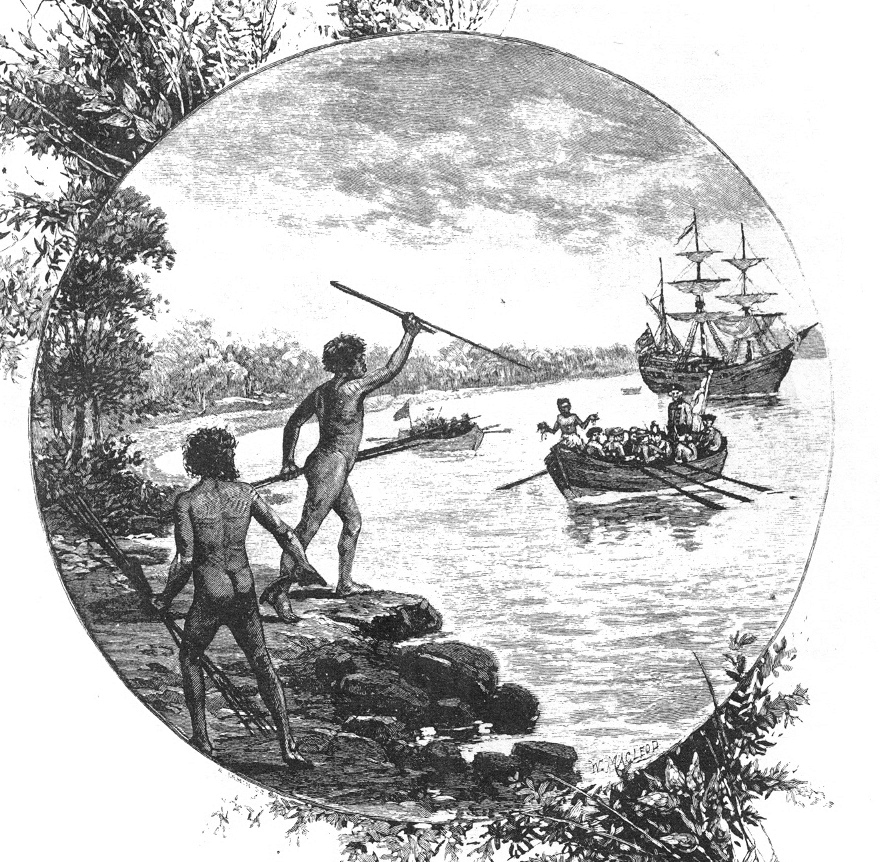Paleolithic Ax Debunks Colonial Myth

In May, Peter Hiscock, an archaeologist from the University of Sydney, and his colleagues reported their new conclusions about a fragment of a ground-edge ax from the Kimberley region of Western Australia. The flake had been excavated in the early 1990s but hadn’t been discovered among the rest of the excavated material until 2014.
This artifact is between 44,000 and 49,000 years old, making it the earliest evidence of ground-edge ax technology anywhere in the world. The age of the fragment closely coincides with the first arrival of modern humans on the continent, which archaeological evidence suggests occurred between 60,000 and 50,000 years ago. According to the research team, the fragment represents the independent invention of this technology by the first Australians. The manufacturing process developed to create these tools—which involves grinding and abrading the stone rather than only flaking it—is unique and uncommon outside of the region until around 10,000 years ago (during, for example, the European Mesolithic).
The report generated a lot of news—stories about the “oldest” anything often garner intense public interest. But there’s a bigger story behind why these research results matter, and to understand its significance we need to look at underlying assumptions about where and when human complexity developed and what form it took. “Human complexity” is an enigmatic concept in archeology, but it generally refers to the range of behaviors that help define what it is to be “human.” It has, for example, been linked to the development of increasingly sophisticated tools and social structures.
Historically, archaeological evidence from Australia and most of Southeast Asia has not aligned well with conceptual models of the development of human complexity. That’s because these models were based almost exclusively on the archaeological records of Europe and Africa. This geographical focus led many archaeologists to believe that other regions were impoverished and underdeveloped in comparison to the “normal” course of human history. Indeed, the emphasis on Europe and Africa became a bias.
In the 1940s, for example, Harvard University archaeologist Hallam Movius proposed the so-called Movius Line. This was a theoretical boundary—based on differences in stone-tool technology—drawn across parts of Europe and Asia to separate the supposedly static cultural regions of East and Southeast Asia during the Early Paleolithic (between about 2.7 million and 200,000 years ago) from the supposedly more dynamic ones in Africa and Western Eurasia. The concept was based on the absence of Acheulean bifaces, large two-sided tools (dated between about 1.6 million and 200,000 years ago) that have been integral to our understanding of increasing intelligence among some of our earliest Homo ancestors.
However, since the creation of the Movius Line, intensive fieldwork throughout Asia and a reassessment of certain biases embedded in this theory have brought about a reexamination of its validity and meaning. As British archaeologist Robin Dennell, one of the leading specialists in the Paleolithic period of Asia, argued earlier this year, the concept of the Movius Line “should be disregarded” completely. Dennell added that the Early Paleolithic record of East and Southeast Asia should be seen and treated as comparable to that of Eurasia—not held apart as “the product of an isolated backwater.”
The viewpoint that certain areas of the world are less enterprising or developed than others is also a key concern with regard to more recent time periods, including the early colonization and occupation of Sahul (the Pleistocene-era landmass that’s now Australia and New Guinea) by Homo sapiens between 60,000 and 50,000 years ago. The new conclusions about the Kimberley ax fragment shed light on this period.
Stone tools from the earliest occupation periods in Australia have previously been interpreted as simple and unsophisticated compared to those found elsewhere dating to the same time frame. This discrepancy has led to problematic interpretations about their makers. For example, in 1968, influential British archaeologist Grahame Clark wrote of Australian stone artifacts: “The crude and rather colourless nature of this industry may serve to remind us that the original Australian aborigines [sic] issued from one of the most unenterprising parts of the late Pleistocene world.”
No one would be quite so blunt today. Yet there is a continued unease with the early stone artifact record from Australia, the simplicity of which is often still construed as evidence of a deficiency in early Australian cultures.
But such an interpretation points to a persistent bias about what constitutes the “normal” course of human development. The ground-edge ax flake discovered in the Kimberley region challenges these assumptions.
As Australian cultural geographer Kay Anderson eloquently discusses in her 2007 book Race and the Crisis of Humanism, there is a long tradition in Western thought of placing Indigenous Australians at the bottom of evolutionary and historical schemes. Archaeology’s biases with regard to assessing humanity’s deep past emerged out of European Enlightenment notions of what it meant to be human. One of the first Europeans to describe Indigenous Australians was explorer and author William Dampier in the late 17th century. Dampier described Indigenous Australians as the “miserablest” people in the world, which Anderson explains was mostly based on his assessment that they had failed to rise above nature (such as by transforming the land through agriculture).
Clearly, things have changed since the 17th century. Openly racist positions like Dampier’s do not have a place in contemporary scholarship on this topic. Nonetheless, ongoing biases continue to affect how scholars position Australia and Southeast Asia in the story of human origins.
The tiny ax fragment from the Kimberley region is a reminder that the stories we tell about human origins are key to how we understand the history of our entire species. The fragment fits into a growing body of evidence—including that of rock art in Sulawesi, Indonesia, and highly skilled deep-sea fishing off the coast of East Timor—demonstrating that the first colonizers of Australia and Southeast Asia were developing expressions of human flexibility and creativity earlier than previously assumed. The archaeological evidence from this region also shows expressions of complex human behaviors that are unique for the time period.
The long-standing idea of a “normal” course of human development is deeply flawed and should be rejected outright. The story of human origins has to be an inclusive global story that does not privilege the history of one or two geographical regions over all others.



































